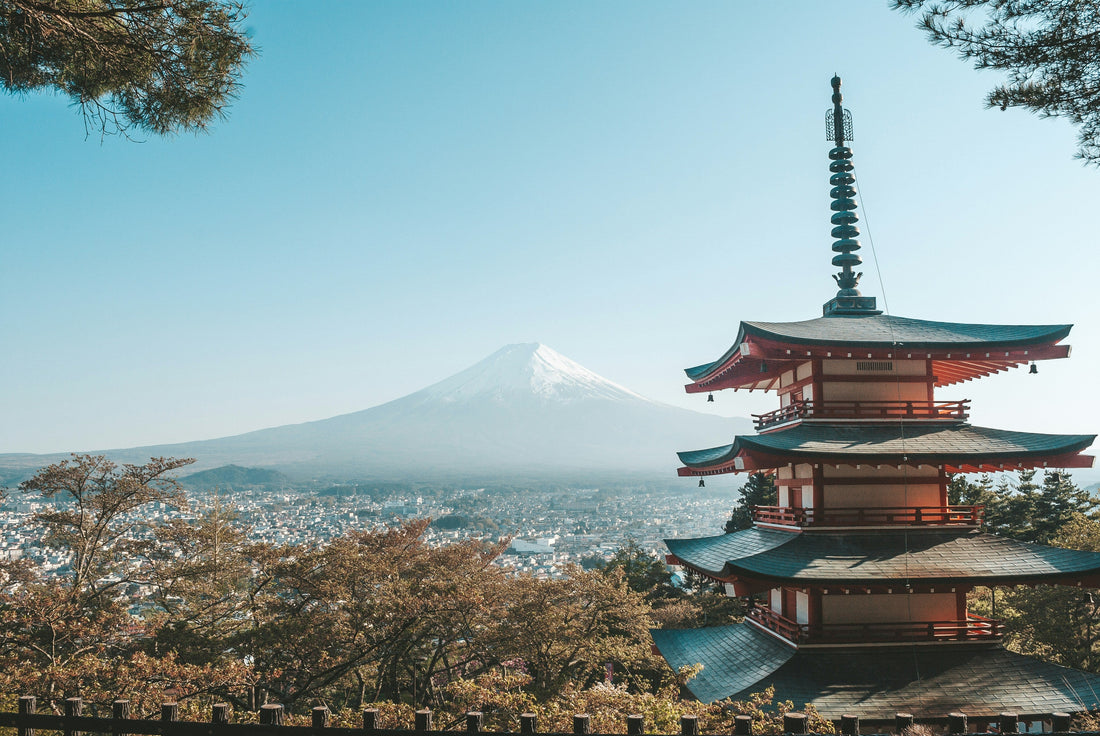
Incense in Japanese Culture
In Japan, incense is more than a pleasant aroma—it’s a pathway to presence, beauty, and spiritual depth. Whether used in quiet temples, during tea ceremonies, or in the refined art of Kōdō (香道), the practice of incense burning in Japanese culture blends mindfulness, ritual, and aesthetic appreciation.
This blog explores how incense developed in Japan, what it symbolizes, and how it's used—from ancient times to today.

A Fragrant History Rooted in Spirit
Incense was first introduced to Japan in the 6th century via China and Korea, along with the arrival of Buddhism. According to legend, a piece of fragrant agarwood (沈香, jinkō) drifted ashore in Awaji Island in 595 CE. This marked the beginning of incense’s cultural journey in Japan.
In early Japan, incense was used primarily in Buddhist temples to purify spaces and accompany chants and prayers. Over time, incense made its way into courtly life, samurai rituals, and eventually, daily domestic settings.
Incense in Zen and Buddhism
In Buddhist temples across Japan, incense plays a central role in religious practice. It is burned:
- As an offering to the Buddha
- To purify the body and mind before meditation
- During ceremonies, funerals, and memorials
In Zen Buddhism, incense is not just about scent—it’s a reminder to be fully present. The gentle trail of smoke serves as a visual meditation, encouraging practitioners to observe the flow of breath and impermanence.
Burning a stick before zazen (sitting meditation) marks the start of a session and helps set a calm, sacred atmosphere.
Incense in Court Life and Cultural Arts
During the Heian period (794–1185), incense evolved into a refined art form within aristocratic circles. Nobles used incense to perfume their clothing, writing paper, and rooms.
Incense became part of elegant pastimes, like composing poetry or playing the incense guessing game (香合わせ, kō-awase), where guests identified different blends by scent alone.
The aesthetics of incense became deeply tied to the Japanese love of subtlety, impermanence (wabi-sabi), and sensory refinement.
Kōdō: The Way of Incense
Perhaps the most distinct Japanese contribution to incense culture is Kōdō (香道), or The Way of Incense—one of the traditional Japanese arts alongside the tea ceremony (茶道, sadō) and flower arrangement (華道, kadō).
Kōdō is not simply about burning incense—it’s a spiritual and aesthetic practice involving:
- Listening to incense (“monkō” 聞香), rather than smelling it
- Appreciating rare woods, especially jinkō and kyara (precious agarwood)
- Playing ritualized games and following prescribed etiquette
- Practicing mindfulness, silence, and shared presence
A Kōdō gathering involves elegant tools, calligraphy, poetry, and a focus on inner calm. The experience is meditative and deeply respectful of nature’s offering through scent.
Incense in Everyday Japanese Life
Even outside temples and cultural ceremonies, incense remains a common and meaningful part of life in Japan today.
You’ll find incense used:
- At home altars (butsudan) to honor ancestors
- During Obon, a summer festival to welcome the spirits of the dead
- For relaxation, meditation, or simply to freshen a room
- As part of New Year purification rituals
Japanese incense sticks are often coreless, producing less smoke and a more subtle, refined scent. Common materials include sandalwood, aloe wood, cinnamon, and floral powders.
Brands like Shoyeido and Nippon Kodo continue centuries-old traditions while offering blends for modern lifestyles.
The Meaning of Scent in Japanese Culture
In Japanese culture, scent is deeply symbolic:
- Smoke symbolises transience, a visual metaphor for impermanence (無常 mujō)
- Fragrance is associated with purity, refinement, and inward reflection
- The act of burning incense is a form of spiritual cleansing and aesthetic expression
Rather than overpowering the senses, Japanese incense invites quiet presence and gentle observation.
Conclusion: A Ritual of Stillness and Beauty
In Japan, incense is not merely burned—it is appreciated, listened to, and respected. It offers a daily ritual that connects body and mind, history and presence, scent and soul.
Whether you light incense for meditation, memory, or mindfulness, you’re participating in a tradition shaped by centuries of reverence and beauty.
